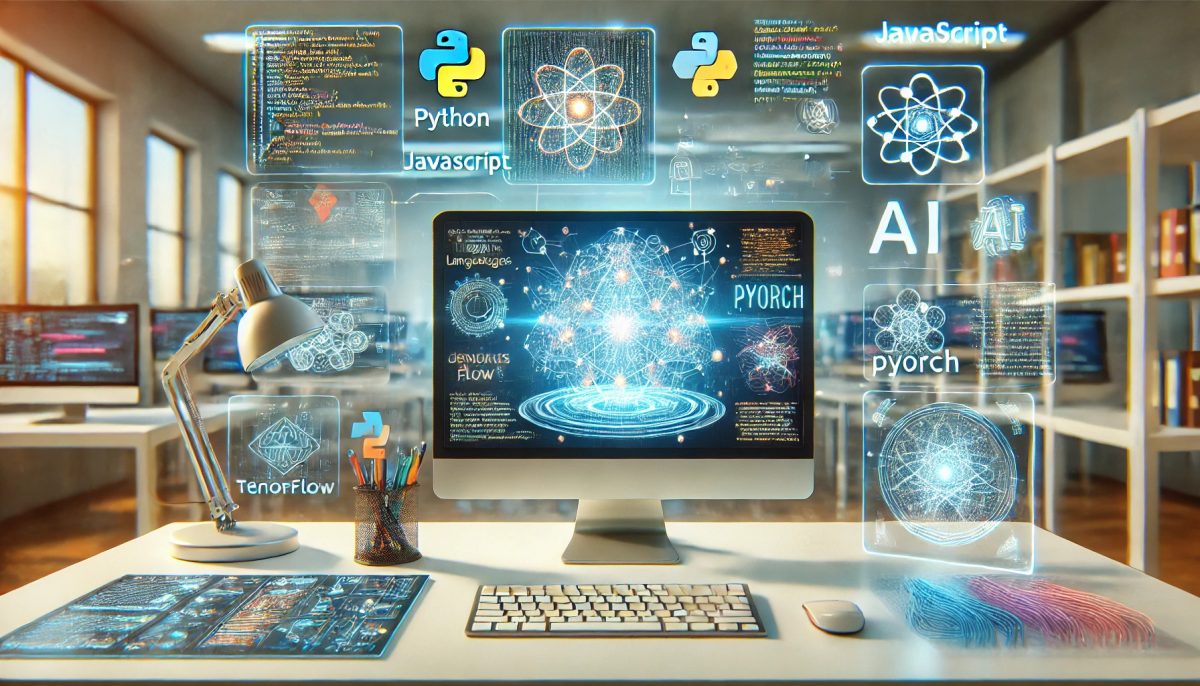Generative AI agents are transforming industries with their ability to create text, images, music, and even code. These agents rely on robust programming languages and frameworks, each chosen for its specific advantages in handling AI’s complex requirements. In this blog post, we’ll explore the most commonly used languages and frameworks in generative AI and explain why they are integral to this domain.
1. Python
Python is the cornerstone of generative AI development. It’s widely used due to its simplicity, extensive library ecosystem, and active community. Libraries like TensorFlow, PyTorch, and Keras make Python indispensable for developing and training large AI models.
- Why Python?
- Easy syntax for quick prototyping.
- Comprehensive AI/ML libraries.
- Seamless integration with visualization tools like Matplotlib and Seaborn.
2. R
Although primarily associated with statistical computing, R is occasionally used in generative AI for tasks requiring robust statistical modeling. Its libraries like caret and ggplot2 are useful for exploratory data analysis, which often precedes AI model development.
- Why R?
- Exceptional for data visualization and statistical operations.
- Complements Python in hybrid environments.
3. C++
C++ is employed in generative AI systems where performance is critical, such as in deploying AI models in resource-constrained environments. It’s often used for the backend of AI-powered applications and for optimizing computation-heavy processes.
- Why C++?
- High performance and control over hardware.
- Useful for fine-tuning model execution speed.
4. JavaScript
JavaScript, with frameworks like TensorFlow.js, has become popular for running AI models directly in web browsers. This is particularly useful for interactive applications like chatbots and real-time AI agents accessible via the web.
- Why JavaScript?
- Enables AI functionality directly in browsers.
- Combines frontend and AI seamlessly for user-centric applications.
5. Java
Java is a reliable choice for building large-scale AI applications. It’s often used in enterprise-level AI solutions due to its robustness, scalability, and strong integration capabilities with other technologies.
- Why Java?
- Excellent for backend systems requiring high scalability.
- Strong in natural language processing (NLP) when paired with libraries like Stanford NLP.
Popular Frameworks in Generative AI
TensorFlow
TensorFlow is one of the most comprehensive frameworks for building, training, and deploying machine learning models. Its ecosystem supports deep learning architectures essential for generative AI.
- Use Case: Training models like GANs (Generative Adversarial Networks) and VAEs (Variational Autoencoders).
PyTorch
Known for its dynamic computation graph, PyTorch is ideal for research and development in generative AI. It’s especially popular in academic settings and is often used to create state-of-the-art models.
- Use Case: Building transformer-based models like GPT and BERT.
Hugging Face Transformers
This library has become synonymous with natural language processing (NLP). It simplifies the deployment of large pre-trained models like GPT, making generative AI accessible to developers.
- Use Case: Fine-tuning pre-trained language models for custom applications.
OpenAI API
While not a traditional framework, OpenAI’s API allows developers to leverage powerful pre-trained models like GPT-4 without needing deep technical expertise.
- Use Case: Building applications requiring human-like text generation.
The Synergy of Tools and Languages
Building generative AI agents often involves a combination of these tools. For example, Python might be used for model development and training, while C++ optimizes runtime performance. Similarly, JavaScript can deliver these models to users via web interfaces.
Conclusion
Generative AI development thrives on the synergy of programming languages and frameworks, each contributing uniquely to the creation process. Python dominates for its versatility, while C++ and Java provide performance and scalability. Frameworks like TensorFlow, PyTorch, and Hugging Face Transformers further empower developers to push boundaries in generative AI.
By understanding the best programming languages and frameworks for generative AI, developers can build more efficient, innovative, and scalable agents.

